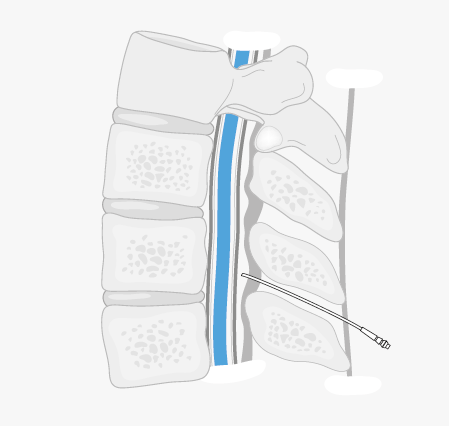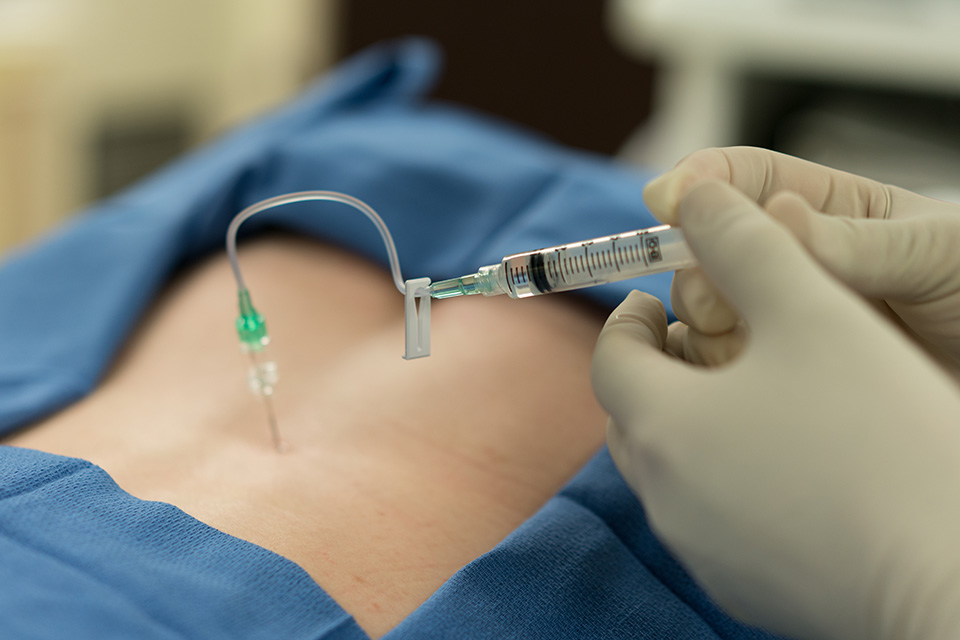Epidural Injection
An epidural injection is performed to treat low or lumbar back pain, commonly with radiation into the legs. The aim of the procedure is to inject steroid medication into the epidural space to reduce local inflammation which may be irritating lumbar nerve roots and ultimately reduce pain.
The epidural space is a fat-filled space that lies below the most posterior bones of the spine, just outside the dura, (a membrane which lines the spinal cavity that houses the nerve roots that serve the legs and pelvic organs). Inflammation as a result of wear and tear involving the lumbar facet joints and/or discs which can result in some narrowing of the space. Alternatively, a “slip” in the spine (known as a spondylolisthesis) can irritate the lumbar nerve roots and installation of an ant-inflammatory medication (steroid) into this space surrounding the roots may reduce pain in the back and/or legs in these scenarios.

What happens before the procedure?
Before being referred for an epidural injection, you need to be assessed by a specialist surgeon or physiotherapist who will take a history of your symptoms and perform a thorough examination. An MRI scan will be requested to investigate your symptoms. The MRI will help to locate which level in the spine your pain may be emanating from and which nerves are most likely to be the cause of the symptoms. If it is decided that you may benefit from an epidural injection, we assess your MRI scan to check that the epidural space at the level we are aiming for is appropriate to take the injection.
How do I prepare for my procedure?
Please inform us if you take regular blood thinning medication when you arrange your appointment as some need to be temporarily withheld beforehand. Do not stop any medication before talking to us. This may be an antiplatelet medication (such as aspirin or clopidogrel), or an anticoagulant medication (for example warfarin, apixaban, dabigatran, or rivaroxaban)
How is the procedure performed?
The procedure is commonly performed with the patient lying on their front. The back is cleaned and local anaesthetic is used to numb the skin over the lower back. Under X-ray guidance we position a thin spinal needle at the appropriate level. The correct needle position is confirmed using an Xray contrast dye injection. A small volume of steroid is then injected into this space.
After the procedure we will assess your ability to move your legs and after a short period of observation you will be allowed home.

What are the side effects of the procedure?
The most common side effect of the injections are slight tenderness and/or bruising at the site of the injection, this usually resolves over the first few days. In some cases people may feel increased pain for a few days after the injection but this should settle. A specific potential complication of the procedure is inadvertent puncture of the dural membrane which may cause a leakage of spinal fluid and subsequent headache due to a reduction of the pressure of this fluid. This is most commonly self-limiting and can be treated using hydration, simple pain killers and increased caffeine intake. Very occasionally the procedure can be complicated by bleeding or infection. More serious side effects are rare but can include bleeding, infection, nerve injury and allergic reactions to the medications used in the procedure. It is important to seek medical help if you are feeling unwell.
How will I feel after the injection?
The steroid medication usually takes two to three days to have an effect and typically peaks at one-two weeks. Regular pain relief medication can be continued as required. The success of the injections in reducing a person’s pain and for what length of time varies with the individual.

